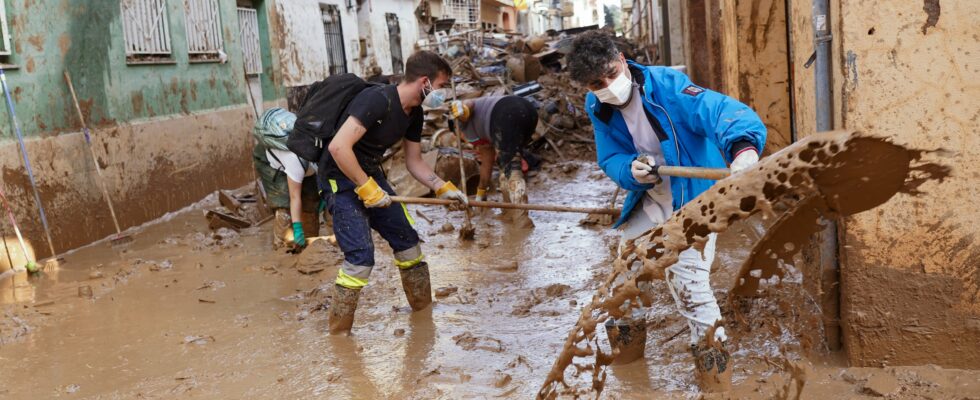The data on the reliefs, the quantities of rain and the number of flood victims in recent decades cannot lie. Spain suffered more than France in terms of exceptional flooding. “Historically, the number of flood victims is higher in Spain than in France. And even if the tragedy of recent days has caused many victims, the floods of 2024 have precedents on the other side of the Pyrenees, confirms hydrologist Eric Gaume, director of the geosciences department at Gustave-Eiffel University. in Nantes. 815 deaths in Barcelona on September 25, 1962, 300 deaths in Andalusia on October 19, 1973… For comparison, the great flood of 1940 in the Pyrénées-Orientales caused 43 victims and around 90 on the Spanish side, while the epicenter of the rains was located in France. The Aude flood in 1999 caused 26 victims; that of Gard, in 2002, 22 victims; that of Var in 2010, 26 victims; and finally that of Nîmes, in 1988, 9 victims”.
However, Spain does not have a monopoly on the most violent episodes. Certain European and particularly French floods (Nîmes in 1988, the Gard in 2002 or the Ardèche in 1958) generated flow rates very close or even higher than that observed in the Valence region. “The northwest of the Mediterranean, and particularly the Cévennes-Vivarais region, constitutes a global hotspot for flash floods,” recalls the scientist. The south of France will therefore have to face new painful episodes in the future. And just as certainly, Paris will be entitled to its hundred-year flood. “With climate change, any small river can cause major flooding,” summarizes Eric Gaume. The question is how to prepare for it.
In Paris, precise maps show us which districts would be the most affected, down to the nearest street, in the event of a flood similar to that of 1910. The authorities, and certain key players such as the RATP, have been preparing for this for a long time. Basins were built upstream to absorb part of the flood. Enough to reduce the water level by 15 to 50 cm in the event of a very large overflow. In the south too, many measures have been taken. In Cannes, multiple developments have been carried out in recent years. In this particularly exposed region, it is becoming increasingly common to stop certain activities (schools, transport) in the event of a high-intensity weather event.
Despite everything, experts have questions. How can we maintain a form of vigilance over time, particularly within the population? “They probably wrongly have the feeling of being too protected,” says Antoine Poincaré, director of the Climate School at AXA Climate. Following the overflows of the Seine in 2016 and 2018, the University of Cergy surveyed the population concerned. A good half said they did not know that they lived in a flood zone.
Beliefs in the effectiveness of the weather system also seem disconnected from reality. “According to a recent survey, 46% of those questioned tell us that it is easy – or even very easy – to predict a flood. A large third even tells us that it is an easy phenomenon to control”, reveals Antoine Poincaré. The complete opposite of reality. This poor perception of risk perhaps explains why, even in the heart of a disaster, part of the population still refuses to leave their place of residence.
A rarely deployed survival kit
“There is clearly a subject of prevention. Citizens should be made aware of good behavior: taking refuge upstairs, not leaving their homes, not staying in their car…”, explains Antoine Poincaré. Many Ile-de-France residents don’t know it, but they should always have a survival kit at home containing three days of food and water. “It’s written somewhere but it’s not really embodied by local prevention policies. We can draw an interesting parallel with Switzerland, which has just launched a communication campaign on the subject and a website on which Citizens can enter useful information: number of occupants of the accommodation, age of people, possible allergies, etc. Depending on the desired ‘survival time’ (in number of days), families receive a precise shopping list allowing them to last until ‘when help arrives in the event of heavy flooding’, he adds.
“We can never guarantee that everything will go well,” says Eric Gaume. However, unpreparedness can be costly in human lives. We saw this in Spain where certain elected officials did not relay warnings in a timely manner. hour and where many people found themselves trapped in their vehicles or in a parking lot.
“The long-term solutions to reduce the effects of these dramatic events are known, explains Antoine Poincaré. We need to set up storage facilities, de-waterproof the soil. The problem? All this takes time, it involves heavy investments In the short term, on the other hand, we can really influence the population’s capacity to assess the danger and act accordingly. Inform yourself correctly, evacuate when asked, agree to stop part of the economic activity… “In the future, we will see more and more responsible behavior on the part of public actors, businesses and the population “, thinks Antoine Poincaré. The disaster that took place in Spain in any case invites us to put the subject back on the table.
.
